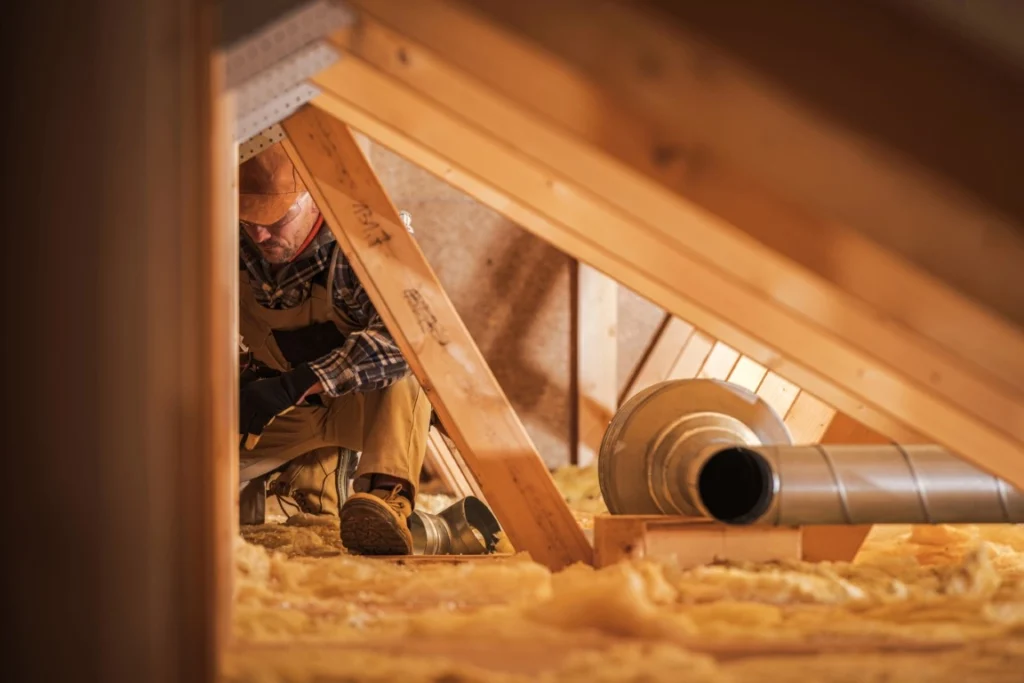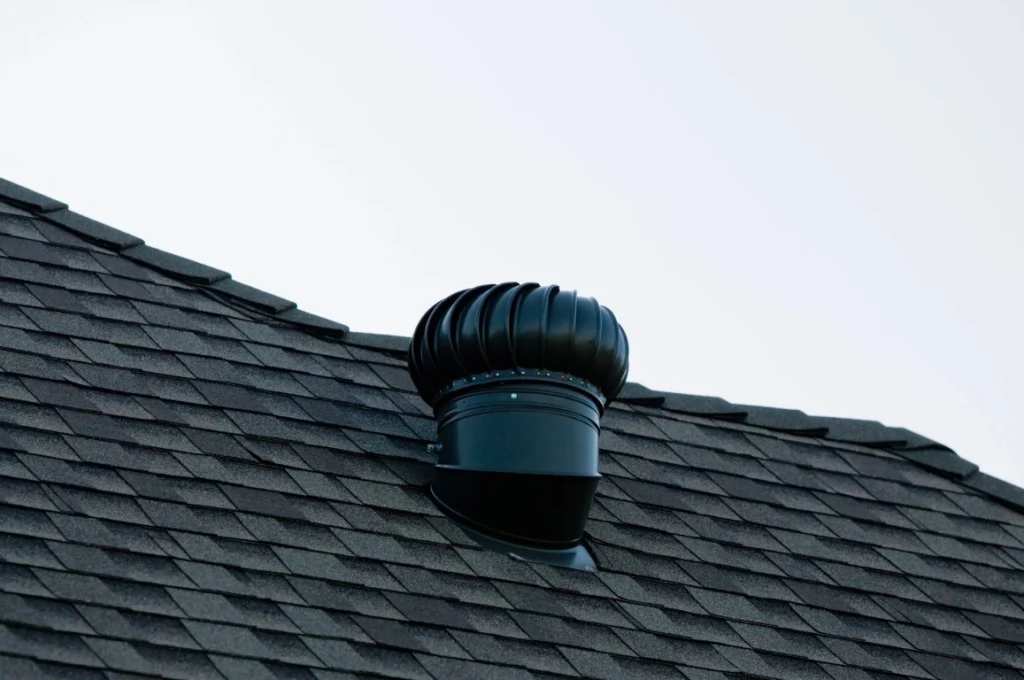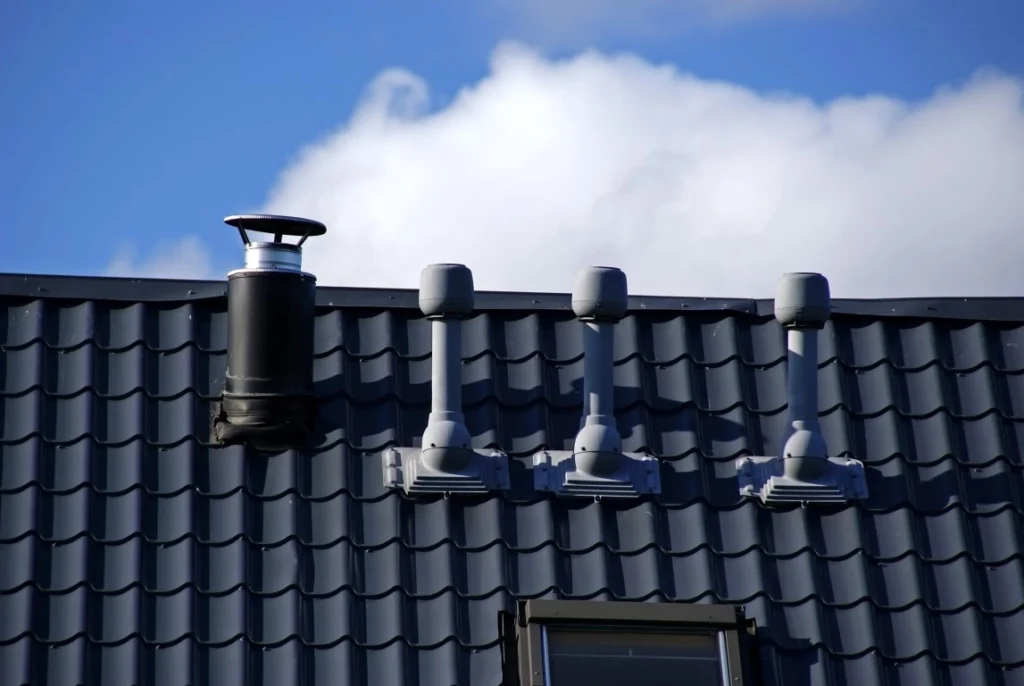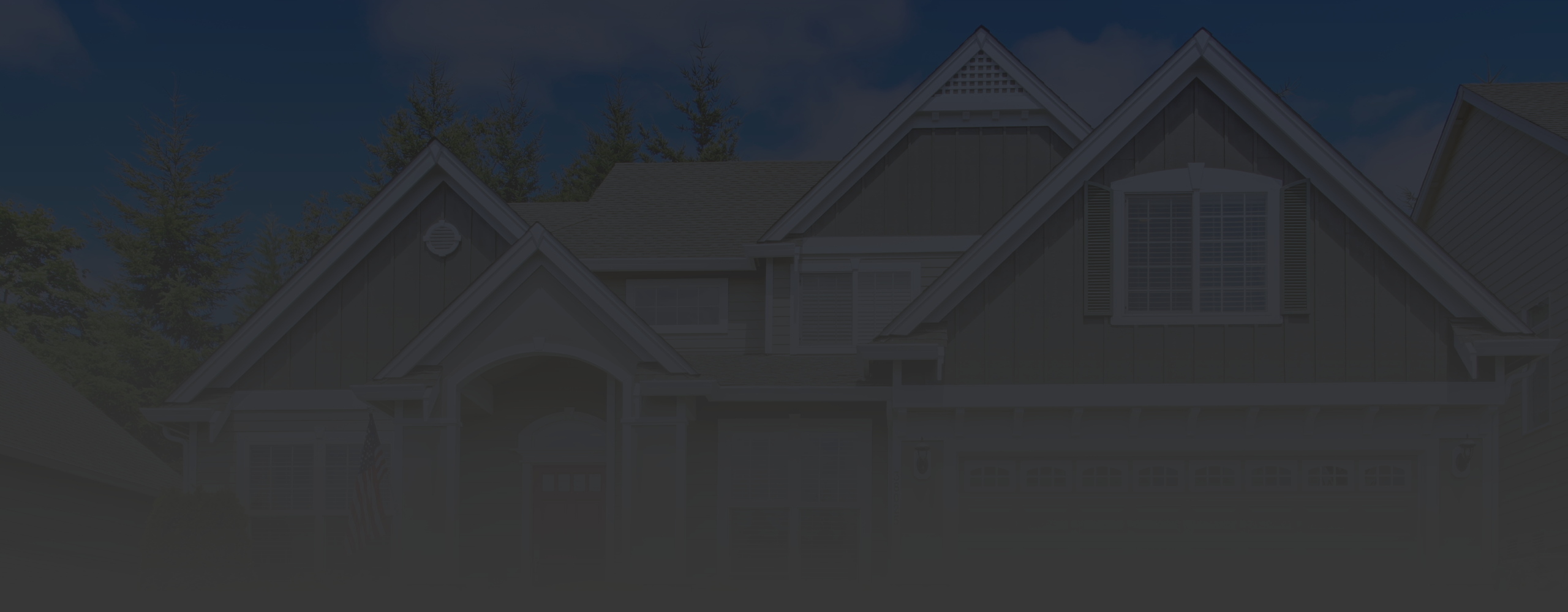
A healthy roofing system isn’t just about the roof itself; attic ventilation also plays an important role. This often-overlooked aspect of home construction affects everything from your home’s energy efficiency to the roof’s longevity.
At Kanga Roof, we want homeowners to have the tools and knowledge they need to ensure their homes are comfortable and keep them in optimal condition for decades to come. In this blog post, we’ll share why proper attic ventilation matters, signs it may be inadequate, and how it can benefit your home.
What Is Attic Ventilation?
First, let’s go over what exactly attic ventilation is. Essentially, it involves intake and exhaust vents that allow for continuous air exchange between the indoors and outdoors. This exchange is vital for maintaining temperature and moisture levels in the attic.
The intake vents allow fresh air in and are typically located at the lowest point of the roof, such as the soffits. The exhaust vents can usually be found at the highest points, like the ridge or gables, and let hot, moist air escape.
There’s two types of attic ventilation: passive and active. Passive ventilation is the most common type and relies on natural airflow. Active ventilation is less common and involves powered turbines or fans.

Why Proper Attic Ventilation Matters
So, why is proper attic ventilation so important? Let’s take a closer look at its role in extending your roof’s lifespan, preventing ice dams, controlling moisture, improving energy efficiency, and protecting insulation.
Extends Roof Lifespan
In the summertime, heat buildup in the attic can bake the roofing materials from underneath. In winter, moisture accumulation can cause the materials to deteriorate. By letting warm or moist air escape, attic ventilation systems can preserve your roof and extend its lifespan.
Prevents Ice Dams
When warm air is trapped in the attic, it can cause snow to melt unevenly. When the melted snow refreezes at the eaves, it creates dangerous ice dams, inhibiting proper runoff and leading to deterioration of the roofing materials. Ventilation helps prevent ice dams by allowing warm air to escape.
Controls Moisture and Prevents Mold
Everyday household activities like cooking and showering release moisture into the air. If not properly ventilated, this humidity can collect in the attic, increasing the risk of mold, mildew, and wood rot. Plus, excess moisture can flatten or degrade attic insulation, reducing its effectiveness and increasing heating and cooling costs.
With proper ventilation, this humid air is released outside, preventing moisture-related issues and protecting the insulation.
Improves Energy Efficiency
When the attic heats up in the summer, the heat doesn’t just stay there — it spreads throughout the home, forcing the HVAC system to work harder. Proper ventilation helps keep the attic temperature closer to that of the outside air, reducing strain on the air conditioning system.
Signs Your Attic Ventilation Might Be Inadequate
Your attic ventilation may be inadequate if you notice any of these signs:
- An excessively hot attic in the summer
- Ice dams on the roof in the winter
- Musty smells or signs of mold/mildew
- Peeling paint on roof eaves
- High energy bills
- Rust on metal fixtures or nails in the attic
Once you’ve identified signs of ventilation problems, it’s time to identify why they occurred in the first place. Common attic ventilation mistakes include:
- Blocking soffit vents with insulation
- Installing only intake or only exhaust vents, not both
- Using incompatible vent types together
- Oversized or undersized ventilation, especially in DIY installs without airflow calculations

How to Ensure Proper Attic Ventilation
If you suspect inadequate attic ventilation, consider upgrades like ridge vents, attic fans, or baffles to protect soffit vents. Additionally, make sure you keep up with regular maintenance, including keeping vents clear of debris and checking periodically for mold or condensation in the attic.
It’s also a smart idea to hire a roofing professional to inspect and evaluate your current ventilation situation as part of your full roofing system. They can help you achieve the correct ventilation ratio (typically 1 square foot of venting for every 150 square feet of attic floor space), ensure code compliance and optimal airflow, and identify related issues like improper roof drainage and insulation problems.
Expert Roof Inspections and Maintenance by Kanga Roof
If you want a longer-lasting roof, better energy efficiency, and a healthier home, trust Kanga Roof to help you achieve your goals. Contact us today to schedule an inspection or repair service, and we’ll be there to help you keep your roof performing at its best.



Follow Us